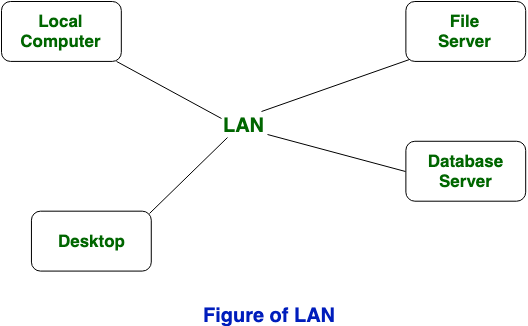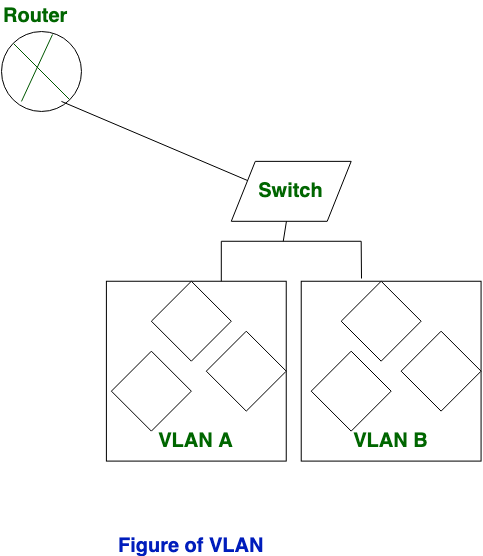Difference between LAN and VLAN
Last Updated :
02 Feb, 2023
LAN stands for Local Area Network is a group of network devices which allow the communication between connected devices.
Advantages
- Low-cost
- Sharing is easy
- Easy configuration
Disadvantages-
- Issues in security
- Covers limited area
- Infected to viruses easily.
VLAN
VLAN stands for Virtual Local Area Network which is used to enhance the performance of LANs (Local Area Networks).
Advantages-
- Data transmission is fast.
- It has good performance.
- Less network administration
Disadvantages-
- Infected to viruses easily
- Additional router is required.
- Packets are more likely to leak from one VLAN to another VLAN.
Difference between LAN and VLAN-


Differences between LAN and VLAN are as follows:
| LAN |
VLAN |
| LAN stands for Local Area Network. |
VLAN stands for Virtual Local Area Network. |
| It work on a single broadcast domain. |
It works on multiple broadcast domain. |
| It was developed in late 1970s. |
It was developed in 2003. |
| The cost of Local Area Network is high. |
The cost of a Virtual Local Area Network is less. |
| The latency of Local Area Network is high. |
The latency of a Virtual Local Area Network is low. |
| The devices which are used in LAN are: Hubs, Routers and switch. |
The devices which are used in VLAN are: Bridges and switch. |
| They use standard Ethernet protocols. |
They used ISP and VTP standard protocols. |
| Connection ranges up to 2 miles. |
Connection has a similar range. |
| In local area network, the Packet is advertised to each device. |
In virtual local area network, packet is send to specific broadcast domain. |
| Local area network is less efficient than virtual local area network. |
Virtual local area network is greater efficient than local area network. |
| No information is needed to use LAN. |
User should know multiple commands to configure VLAN. |
| There are no types in LAN. |
Default VLAN, Data VLAN, Native VLAN, Management VLAN and voice VLAN are the types of VLAN. |
Like Article
Suggest improvement
Share your thoughts in the comments
Please Login to comment...